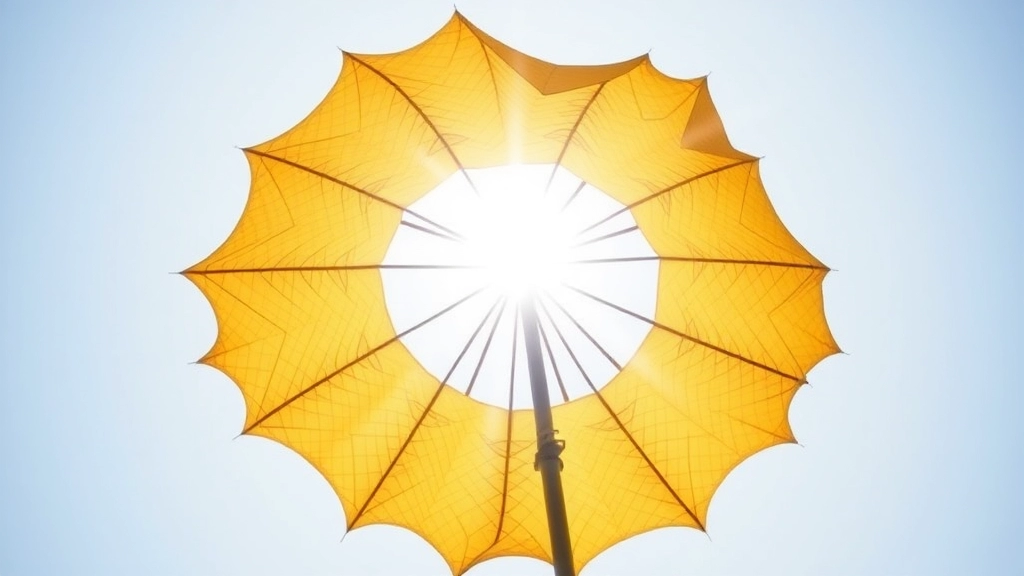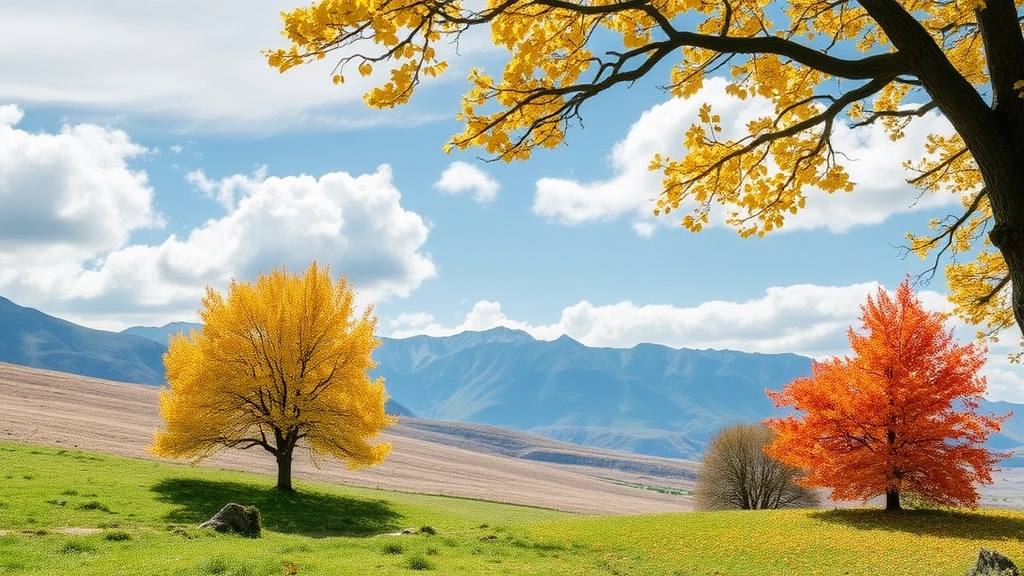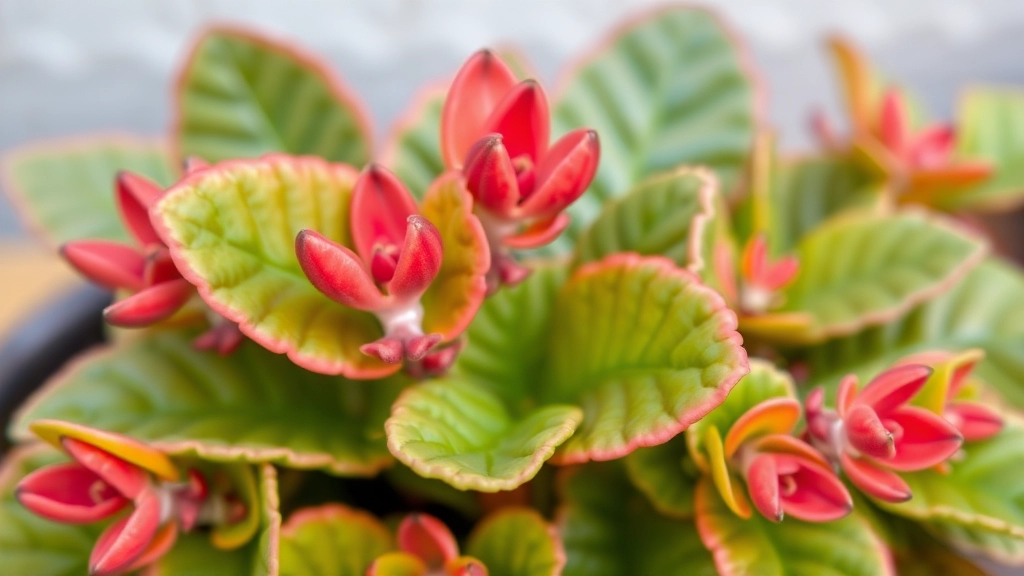Kalanchoe Leaves Turning Red
Ever noticed your Kalanchoe leaves turning red and wondered what’s going on? You’re not alone. This common issue can be a sign of several factors affecting your plant’s health. Let’s dive into some practical tips to help you understand and address this problem effectively.
From too much sunlight to nutrient deficiencies, there are various reasons why your Kalanchoe leaves might be changing colour. Stick around as we explore these causes and offer simple solutions to keep your plant thriving.
Many Kalanchoe enthusiasts are puzzled when they notice their beloved plants developing red leaves. Understanding the common causes can help you restore your Kalanchoe to its vibrant self.
One of the primary reasons for red leaves in Kalanchoe is environmental stress. Plants are sensitive to their surroundings, and any sudden changes can lead to visible symptoms. Overexposure to sunlight can cause leaf scorching, resulting in red or brown tips. Insufficient light may also stress the plant, leading to color changes as it struggles to photosynthesize effectively.
Another significant factor is nutrient deficiencies. Kalanchoe requires a balanced diet to thrive, and a lack of essential nutrients can cause stress. Nitrogen deficiency often leads to pale or red-tinged leaves. Potassium deficiency can also result in red edges on leaves.
Temperature plays a crucial role in the health of Kalanchoe. Extreme fluctuations can shock the plant, manifesting in red leaves. Cold drafts can cause stress, leading to color changes. High temperatures can also be detrimental, especially if combined with low humidity.
Watering practices greatly influence the health of Kalanchoe. Both overwatering and underwatering can lead to red leaves. Overwatering can suffocate roots, causing stress and color changes. Underwatering can lead to dehydration, prompting the plant to change color as a survival mechanism.
Sunlight is essential for Kalanchoe, but the amount and intensity matter significantly. Too much or too little light can lead to red leaves. Direct sunlight for prolonged periods can scorch the leaves. Lack of adequate light can cause the plant to stretch and change color as it searches for more light.
Pests and diseases can also contribute to the appearance of red leaves. Common pests like aphids and mealybugs can stress the plant, leading to color changes. Fungal infections may also cause discoloration, often accompanied by other symptoms.
Seasonal changes can affect Kalanchoe’s appearance. As the seasons shift, so do the plant’s needs. Winter dormancy may cause leaves to redden as the plant conserves energy. Spring growth can stimulate vibrant colors but may also lead to stress if conditions aren’t optimal.
To keep your Kalanchoe healthy and vibrant, consider these preventative measures: Monitor light levels and adjust accordingly. Ensure a balanced fertilization schedule. Water appropriately, allowing the soil to dry between waterings. Keep an eye out for pests and treat promptly.
If you’ve tried these tips and your Kalanchoe still has red leaves, it may be time to seek professional help. A knowledgeable gardener or plant specialist can provide insights tailored to your plant’s specific needs. For more detailed care tips, you might find our guide on how to care for a Kalanchoe succulent helpful. Additionally, understanding how to propagate Kalanchoe leaves can ensure your plant’s longevity and health.
Environmental Stress Factors

Have you ever noticed your Kalanchoe’s leaves turning red, and wondered if it’s just being dramatic?
Well, environmental stress factors could be the culprit.
These plants are tough cookies, but they still have their limits. Here are some common stressors to keep an eye on:
- Sudden Changes: If you’ve moved your plant from one spot to another, it might not be too happy. Kalanchoes prefer consistency.
- Humidity Levels: Too dry or too humid? Both can stress your plant out. Ideally, they thrive in moderate humidity.
- Airflow: Stagnant air can lead to issues. Make sure your Kalanchoe is in a spot with good circulation.
- Pest Presence: Sometimes, little critters can stress out your plant. Check for pests like mealybugs or aphids.
- Container Size: If your plant feels cramped, it can show stress through its leaves. Repotting might be necessary.
If you notice red leaves, it’s a sign your Kalanchoe is trying to tell you something’s off.
Nutrient Deficiencies and Imbalances
Have you noticed your Kalanchoe’s leaves turning red? This could be a sign of nutrient deficiencies or imbalances.
Kalanchoes thrive on a balanced diet of nutrients, and when they don’t receive what they need, it can lead to alarming changes in their appearance.
Common Nutrient Deficiencies
- Nitrogen Deficiency:
- Causes leaves to yellow before turning red.
- Affects overall growth and vitality.
- Phosphorus Deficiency:
- Often results in dark green or purplish leaves.
- Can stunt growth and flowering.
- Potassium Deficiency:
- Leads to weak stems and red or brown edges on leaves.
- Impacts the plant’s ability to absorb water.
Nutrient Imbalances
Sometimes, an excess of one nutrient can inhibit the absorption of another. For instance, too much nitrogen can lead to a deficiency in potassium. This imbalance can manifest as red leaves, affecting your plant’s health.
- Signs of Imbalance:
- Stunted growth
- Leaf discoloration
- Poor flowering
Solutions
To prevent nutrient deficiencies and imbalances, consider the following tips:
- Use Balanced Fertiliser: A balanced, slow-release fertiliser can provide essential nutrients.
- Regular Soil Testing: Test your soil periodically to monitor nutrient levels.
- Observe Growth Patterns: Keep an eye on your plant’s growth; any sudden change may indicate nutrient issues.
For more detailed guidance on maintaining a healthy Kalanchoe, check out our Ultimate Guide to Growing and Caring for Succulent Plant Kalanchoe and learn how to Propagate Kalanchoe Flapjack Easily.
Impact of Temperature Fluctuations

Have you noticed your Kalanchoe developing red leaves, and are you wondering if temperature changes could be the culprit?
Temperature fluctuations can significantly affect the health of your Kalanchoe.
These plants thrive in a stable environment, ideally between 20°C to 25°C (68°F to 77°F).
When temperatures dip below 15°C (59°F) or soar above 30°C (86°F), your Kalanchoe may react negatively.
Here’s how temperature changes can manifest:
- Cold Stress: If exposed to chilly drafts or sudden drops in temperature, Kalanchoe leaves may turn red as a stress response.
- Heat Stress: Conversely, excessive heat can lead to dehydration, causing leaves to redden as the plant struggles to retain moisture.
- Sudden Changes: Rapid temperature shifts, such as moving your plant from indoors to outdoors, can shock the plant, leading to colour changes.
To mitigate these effects, consider the following tips:
- Consistent Environment: Keep your Kalanchoe in a room with stable temperatures.
- Avoid Drafts: Position your plant away from windows or doors that may let in cold air.
- Monitor Heat Sources: Ensure your plant isn’t too close to radiators or heating vents.
Effects of Overwatering and Underwatering
Have you ever noticed your Kalanchoe’s leaves turning red and wondered if it’s due to improper watering? The balance between overwatering and underwatering is crucial for the health of your plant.
Overwatering: The Silent Killer
Overwatering is a common issue that can lead to root rot, a condition where the roots become waterlogged and begin to decay. When this happens, the plant struggles to absorb nutrients, resulting in stress that can manifest as red leaves.
- Signs of Overwatering:
- Yellowing leaves
- Mushy stems
- Foul smell from the soil
Underwatering: The Other Extreme
On the flip side, underwatering can also cause your Kalanchoe to show distress. When the plant doesn’t receive enough moisture, it can’t sustain its vibrant green colour, leading to red leaves as a stress response.
- Signs of Underwatering:
- Dry, crispy leaves
- Leaf drop
- Soil pulling away from the pot edges
Finding the Right Balance
To keep your Kalanchoe thriving, it’s essential to find the right watering balance. Here are some tips:
- Check Soil Moisture: Stick your finger into the soil; if it feels dry an inch down, it’s time to water.
- Use Well-Draining Soil: A mix designed for succulents helps prevent water retention.
- Water Thoroughly: Ensure water drains out of the pot to avoid soggy roots.
- Adjust with Seasons: In winter, reduce watering as the plant’s growth slows.
For more detailed information on how often to water your Kalanchoe, check out our complete guide. Additionally, if you’re dealing with specific leaf problems, you might find our article on Kalanchoe leaf problems useful.
Role of Sunlight Exposure

Have you ever noticed your Kalanchoe’s leaves turning red and wondered if it’s getting too much or too little sunlight?
Sunlight plays a massive role in the health of your plant.
Too much direct sunlight can scorch those beautiful leaves, while too little can lead to weak growth and colour changes.
Here’s how to strike the right balance:
- Ideal Light Conditions: Kalanchoe thrives in bright, indirect sunlight. A south or west-facing window is often perfect.
- Signs of Too Much Sun: If your leaves are becoming crispy or developing brown spots, it’s a sign they might be getting too much direct sun.
- Signs of Too Little Sun: If your plant is stretching towards the light or the leaves are losing their vibrant colour, it’s time to consider moving it to a sunnier spot.
- Adjust Gradually: If you need to move your Kalanchoe, do it gradually to avoid shocking the plant.
Remember, every plant is unique. Pay attention to how your Kalanchoe reacts to its environment.
Pest and Disease Influence
Have you noticed your Kalanchoe’s vibrant green leaves turning red or discoloured? One potential culprit could be pests or diseases affecting your plant.
Seasonal Changes and Their Impact

Ever noticed your Kalanchoe looking a bit different as the seasons shift?
It’s not just your imagination. Seasonal changes can have a significant impact on the health and appearance of your plant, especially when it comes to those pesky red leaves.
Spring Awakening
As the days get longer and warmer, Kalanchoes often thrive.
But if they’re not getting enough light, they might stress out and show it through red leaves.
Summer Sunshine
In the summer, these plants love basking in the sun.
However, too much direct sunlight can scorch their leaves, leading to a change in colour.
Autumn Adjustments
When autumn rolls around, the temperature starts to drop.
Your Kalanchoe might respond by changing colour as it prepares for dormancy.
This isn’t always a bad sign; it’s just nature’s way of telling you it’s time to adjust care routines.
Winter Woes
Winter can be a tricky time.
With less light and cooler temperatures, Kalanchoes often slow down their growth.
If they’re not getting enough light, you might see those red leaves pop up again as a signal of stress.
Key Takeaways
- Spring: Watch for light levels; they can stress easily.
- Summer: Balance sunlight; too much can scorch them.
- Autumn: Colour changes can mean prep for dormancy.
- Winter: Less light can lead to stress; adjust care accordingly.
Preventative Measures and Care Tips
Are you worried about your Kalanchoe’s leaves turning red?
Understanding how to prevent this issue can save you time and frustration.
Here are some effective care tips to keep your Kalanchoe healthy and vibrant:
1. Optimal Watering Practices
- Check Soil Moisture: Always ensure the soil is dry before watering.
- Use Well-Draining Soil: A mix designed for succulents is ideal.
- Water Sparingly: During the winter months, reduce watering frequency.
2. Light Conditions
- Bright, Indirect Light: Position your plant where it receives ample light without direct sunburn.
- Rotate Regularly: This ensures even growth and colour retention.
3. Temperature Control
- Maintain Consistent Temperatures: Aim for a range between 18-24°C (65-75°F).
- Avoid Drafts: Keep your plant away from open windows and air conditioning vents.
4. Nutrient Management
- Fertilise Sparingly: Use a balanced, diluted fertiliser during the growing season, but avoid over-fertilising.
- Monitor Soil pH: Ensure it remains slightly acidic to neutral.
5. Pest Prevention
- Regular Inspections: Check for pests like mealybugs and aphids.
- Natural Remedies: Consider neem oil as a natural deterrent.
6. Seasonal Adjustments
- Adjust Care Routine: Be mindful of seasonal changes and adapt your care accordingly.
For more detailed guidance on keeping your Kalanchoe thriving, check out our essential fall Kalanchoe care tips and learn why your florist Kalanchoe might not be flowering.
When to Seek Professional Help for Your Kalanchoe
So, you’ve tried everything to bring your Kalanchoe back to life, but those red leaves just won’t budge. It can be frustrating, right?
Sometimes, despite our best efforts, we need to call in the pros. Here’s when you should consider seeking professional help for your beloved plant.
Signs It’s Time to Reach Out
- Persistent Red Leaves: If the red leaves hang around for weeks despite changes in care, it might be time to consult an expert.
- Rapid Decline: Notice your Kalanchoe wilting or losing leaves quickly? That’s a red flag!
- Pest Infestation: If you spot pests like mealybugs or aphids that you can’t seem to get rid of, don’t hesitate to get help.
- Mould or Fungal Growth: Any signs of mould or unusual spots could signal a deeper issue that needs professional attention.
Where to Find Help
- Local Nurseries: They often have knowledgeable staff who can give you tailored advice.
- Online Plant Forums: Websites and communities dedicated to plant care can be a treasure trove of information.
- Professional Plant Care Services: If you’re really stumped, consider hiring a local plant care expert.
Don’t feel bad about reaching out for help. Even the best plant parents sometimes need a little guidance. For more detailed care tips, check out our Ultimate Guide to Flowering Kalanchoe Care and learn how to care for and propagate Kalanchoe Mother of Millions.
FAQs on Kalanchoe Leaves Turning Red
Why are my Kalanchoe leaves turning red?
Red leaves on your Kalanchoe can be a sign of environmental stress. Factors like sudden changes in location, humidity levels, poor airflow, pest presence, or an unsuitable container size can stress the plant.
Can temperature changes cause Kalanchoe leaves to turn red?
Yes, temperature fluctuations can significantly affect your Kalanchoe. These plants thrive in stable environments between 20°C to 25°C (68°F to 77°F). Temperatures below 15°C (59°F) or above 30°C (86°F) can cause the leaves to turn red as a stress response.
How does sunlight exposure impact the color of Kalanchoe leaves?
Sunlight plays a crucial role in the health of your Kalanchoe. Too much direct sunlight can scorch the leaves, while too little can lead to weak growth and color changes. The plant thrives in bright, indirect sunlight.
Do seasonal changes affect the color of Kalanchoe leaves?
Yes, seasonal changes can impact your Kalanchoe. In spring, lack of light can stress the plant. During summer, too much direct sunlight can scorch the leaves. In autumn, color changes may indicate preparation for dormancy. Winter’s reduced light and cooler temperatures can also stress the plant, leading to red leaves.
How can I prevent my Kalanchoe leaves from turning red due to environmental stress?
To prevent red leaves due to environmental stress, maintain a consistent environment, ensure moderate humidity, provide good airflow, check for pests, and repot if the plant feels cramped.
What should I do if my Kalanchoe is exposed to sudden temperature changes?
If your Kalanchoe is exposed to sudden temperature changes, try to keep it in a room with stable temperatures, avoid drafts, and monitor its proximity to heat sources. Gradual adjustments can help mitigate the effects of temperature fluctuations.
How do I know if my Kalanchoe is getting too much or too little sunlight?
If your Kalanchoe leaves are becoming crispy or developing brown spots, it may be getting too much direct sunlight. If the plant is stretching towards the light or losing its vibrant color, it might need more sunlight. Adjust its position gradually to avoid shocking the plant.
What are the key takeaways for seasonal care of Kalanchoe?
- Spring: Monitor light levels to prevent stress.
- Summer: Balance sunlight exposure to avoid scorching.
- Autumn: Color changes can indicate preparation for dormancy.
- Winter: Adjust care for reduced light to prevent stress.
References
-
Why Are My Kalanchoe Leaves Turning Red?
-
How to Care for Kalanchoe Plants
-
Growing Kalanchoe: Tips for Success
